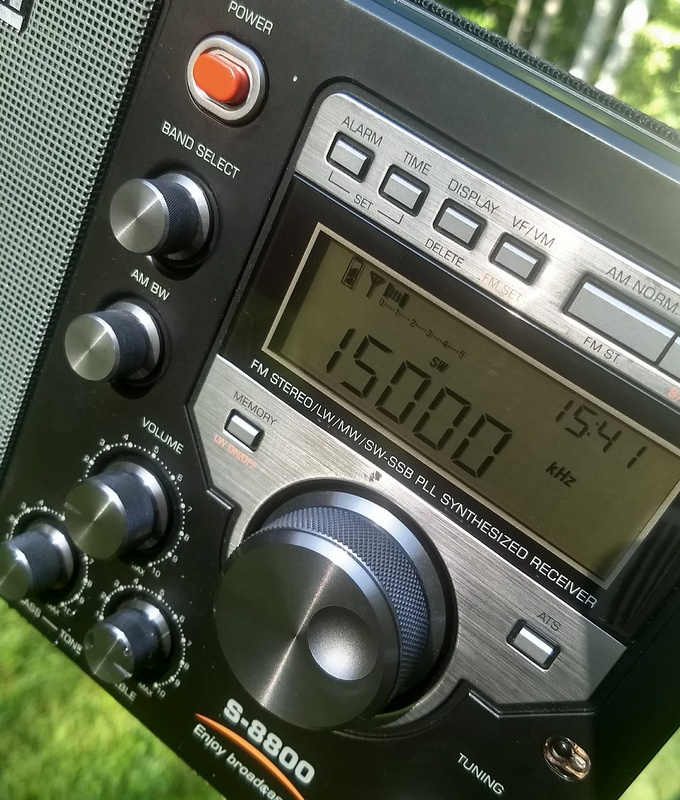 The following article originally appeared in the November 2018 issue of The Spectrum Monitor magazine:
The following article originally appeared in the November 2018 issue of The Spectrum Monitor magazine:
Shortwave Portables: Some of my favorites
Being a radio writer and blogger, I’m often asked, “Isn’t radio dying?” or “How long are you going to keep listening to radio when there are so many other options out there?”
My answer? It’s simple:
Radio is about the journey. And radios are the vehicles with which I explore our planet, albeit sonically. I’ll stop listening to radio when it stops transporting me to far-flung, fascinating places across our planet.
I’ll stop listening to radio when when it can no longer provide the kind of direct information and understated entertainment that is, for me (and a few others like me), a welcome relief from the overwhelming demands and distractions of the Internet.
And I’m perhaps a bit anachronistic in that I prefer radio’s subtler theatre of the mind over the mindless image consumption that television demands; thus, I’ll stop listening to radio when it too, tells me what I must think, what I must imagine, and what I must feel.
In short, radio is my tool for exploration, and I continue to enjoy tuning, listening, logging and learning from it. Very fortunately, I have the great pleasure of being in the middle of the world of radio technology in my reviews, evaluations, and alpha/beta testing.
This is why, over the years, I’ve made an effort to share some of my picks of the litter with others. So when TSM editor Ken Rietz asked if I would be interested in writing a feature about this, how could I resist?
What follows is a series of mini-reviews which focus primarily on the portable radio market. This is, by definition, a curated list, but I’ve done my best to include a variety of receivers I regularly recommend. The radios are listed roughly from least expensive ($25) to most expensive ($270), and I’ve only included models that are in production at the time of this publication.
Ever-popular portables
Portables are truly the most popular category of radio among shortwave radio enthusiasts, and it’s no wonder why! Among their other virtues, modern portables can pack a lot of performance into an affordable package, they’re great for travelling, and their all-in-one nature makes shortwave listening accessible to virtually everyone.
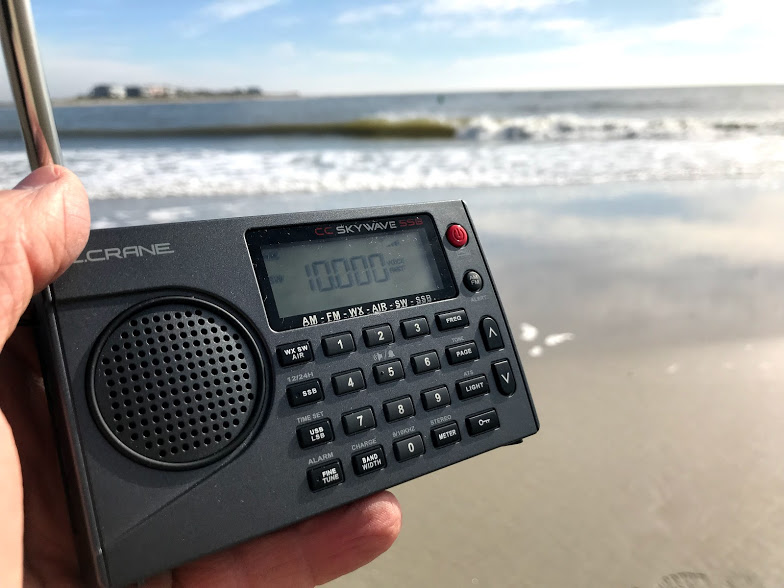 Since I’m in the constant stream of correspondence and comments from radio enthusiasts, I know another reason some listeners consider portables simply invaluable: portables give us refuge from noise. Since many of us live in, and/or travel to, busy urban areas filled with radio interference, portables give us a means to head to the park, beach, or the countryside to escape the noise and increase our odds of working DX.
Since I’m in the constant stream of correspondence and comments from radio enthusiasts, I know another reason some listeners consider portables simply invaluable: portables give us refuge from noise. Since many of us live in, and/or travel to, busy urban areas filled with radio interference, portables give us a means to head to the park, beach, or the countryside to escape the noise and increase our odds of working DX.
Fortunately for us, modern portables pack features of which, in former radio-listening days, we could have only dreamed.
What follows is a list of my favorite portables, listed by price in US dollars, with the least expensive first. Please note that retailer links include Amazon and eBay affiliate links that support the SWLing Post with your purchase.
Best Portable Shortwave Radios
$25 – $50 Range
Tivdio V-115 / Retekess V115 / Audiomax SRW-710S
Pros: Affordability, sensitivity, built-in recording and audio playback features, compact size, impressive audio from internal speaker
Cons: Mutes between frequencies, front panel buttons feel rather cheap, no SSB mode, sluggish response from controls, small telescoping whip
Summary: For about $25, it’s hard to complain about the V-115. Its performance and list of features exceeds expectations for radios in this price range, which are generally a disappointment. As for myself, I mainly use the V-115 as receiver to make off-air recordings and as an occasional backup radio. Unless your budget is very tight, don’t buy the V-115 as your main receiver; rather, buy it to keep in the glove compartment of your car or in your go-bag. Note that this radio carries a number of brand names and has been rebadged many times. Click here to read more reviews of the V-115 on the SWLing Post.
Retailers:
Grundig Mini
Pros: Compact, simple, adequate sensitivity and selectivity, clear backlight display, surprisingly decent audio from internal speaker
Cons: No direct frequency entry, no SSB mode, limited features compared with pricier receivers
Summary: The Grundig/Eton Mini is the latest in the lineage of the Mini series from Eton. The Mini has remained a popular radio because it delivers decent performance, with above average audio and makes for a nice broadcast listening companion. I recommend the Mini as a gift for those who want a simple pocket radio to operate with an easy-to-read display––great for the traveler or for elderly parents or grandparents who don’t like too many fussy buttons. Certainly a great value for the money.
Retailers:
Tecsun PL-380
Pros: Excellent sensitivity and selectivity, excellent audio via headphones, multiple AM bandwidths, ETM auto-tuning, excellent ergonomics, responsive controls, direct frequency entry, excellent bang-for-buck
Cons: No SSB mode, slight muting between frequency changes
Summary: The venerable PL-380 was my first ultralight Tecsun radio. It’s been on the market for many years, no doubt due to its solid performance. The PL-380 has an excellent receiver with impressive sensitivity and selectivity. The ETM auto-tuning feature is ideal for those of us who like to travel. The PL-380 is durable, affordable, and in terms of performance, is very similar to the PL-310ET (below). The PL-310ET might have a slight edge in terms of sensitivity. But for just $45, you simply can’t go wrong with the PL-380.
Retailers:
Tecsun PL-310ET
Pros: Excellent sensitivity and selectivity (perhaps slightly more sensitive than similarly-priced PL-380), excellent audio via headphones, multiple AM bandwidths, ETM auto-tuning, excellent ergonomics, responsive controls, direct frequency entry, excellent bang-for-buck
Cons: No SSB mode, slight muting between frequency changes
Summary: The PL-310ET, like its cousin the PL-380, is a classic ultralight radio and performs brilliantly for the price. The PL-310ET has long been the backup radio I’ve taken along on mini DXpeditions and field-listening sessions. The ETM auto-tuning feature is ideal for those of us who like to travel. The PL-310ET is reliable, and you’re hard-pressed to find a better performer under $50––indeed, it rivals some receivers twice its price. A solid choice for the budget-minded radio enthusiast and Ultralight DXer.
Retailers:
$50 – $100 Range
XHDATA D-808
Pros: Impressive overall performance, SSB mode, multiple AM and SSB filter widths, above-average audio from internal speaker, RDS, dedicated fine-tuning control, decent battery life from four standard AA cells, includes AIR band
Cons: Mutes between frequency changes, sluggish response from controls
Summary: The XHDATA D-808 was, no doubt, the most surprising receiver to hit the market in 2017. It’s an impressively sensitive radio across the bands, and can be snagged for an affordable price (generally $75-80 US). I was very skeptical of the D-808, but when I put it on the air, I discovered it gave some of my full-featured portables a run for their money. It is, indeed, a budget workhorse. If you live in New Zealand or Australia, you might find the very similar Digitech AR-1780 a more accessible option. Internally, the D-808 and Digitech AR-1780 (see below) are very similar. Click here to read more D-808 reviews on the SWLing Post.
Retailers:
Eton Field BT
Pros: Impressive sensitivity, excellent audio fidelity, can be used as a Bluetooth speaker, intuitive display, dedicated RF gain, simple tactile controls, overall quality feel
Cons: Clunky/quirky tuning is painfully slow, no direct frequency keying, no SSB mode
Summary: Last year, my friend Troy Riedel and I met at Mount Mitchell State Park to compare the Eton Field BT with the benchmark ($270) Tecsun S-8800. We were impressed that the Field BT did an admirable job competing with the S-8800 (see below). Indeed, due to the Field BT’s excellent audio, some broadcasts were slightly more intelligible than on the S-8800 (noting the S-8800 also has excellent audio). The only negative that was quite obvious at the time was how cumbersome it was to tune the Field BT compared with the S-8800. One year ago, the Field BT was widely available for $129––lately I’ve seen the price as low as $80 shipped. If you’re looking for a lunchbox radio that packs serious performance, room-filling robust audio, and you don’t mind slow tuning, the Eton Field BT is an excellent choice.
Retailers:
CountyComm GP5-SSB (a.k.a. Tecsun PL-365)
Pros: Excellent sensitivity, audio fidelity quite good via headphones, effective SSB mode, multiple AM and SSB bandwidths, very good medium-wave reception with supplied external bar antenna, unique form factor for one-handed operation, uses three standard AA batteries
Cons: No direct frequency entry, audio tinny via internal speaker, AGC doesn’t cope with fading as well as other comparable portables, no back stand nor rotatable whip antenna; thus this radio is not ideal for tabletop listening, supplied belt clip feels flimsy––if you plan to use this in the field, consider purchasing the excellent CountyComm GP5 series rugged case.
Summary: The GP5-SSB was one of the first sub-$100 DSP portables with SSB mode. Since its release others have entered the market (see XHDATA D-808 above for example). The GP5-SSB has a unique form factor tailored for handheld operation, much like a handie talkie. I keep a GP5-SSB in my backpack to use while on hikes, and am always very pleased with its performance. If you’re looking for a bedside or tabletop portable, I would recommend other similarly-priced receivers like the XHDATA D-808 or Digitech AR-1780. Note that if you live outside North America, you might find it easier to purchase the Tecsun PL-365 which is identical to the GP5-SSB. Click here to read our full review of the CountyComm GP5-SSB.
Retailers:
C. Crane CC Skywave

Listening to the 2016 BBC Midwinter Broadcast to Antarctica while traveling in Canada with the CC Skywave.
Pros: Overall great sensitivity and selectivity for a portable in this price class, considerate design, well-tailored for the traveler, AIR band is truly functional, NOAA Weather radio reception excellent, includes soft silicone earphones (in-ear type) actually worthy of AM/SW listening, auto scanning with the up/down buttons is very rapid, uses common micro USB port for power/charging
Cons: No SSB mode, internal speaker audio is somewhat tinny (use of the voice audio filter helps), no external antenna jack, mutes between frequency changes
Summary: I think the original CC Skywave is a brilliant little radio. Although it lacks SSB mode, it’s a fine broadcast receiver and one of the most sensitive travel portables on the market. For those of us living and traveling in North America, the CC Skywave is a veritable “Swiss Army Knife” receiver, as it not only covers AM, FM and shortwave, but is a capable AIR band and incredibly adept NOAA/Environment Canada weather radio receiver. At $90, I believe it’s the best radio value in the C. Crane product line. If the lack of SSB mode is a deal-breaker for you, consider the Skywave’s pricier brother, the CC Skywave SSB (below), also an excellent performer. Click here to read our full review of the CC Skywave.
Retailers:
$100 – 200 Range
Digitech AR-1780
Pros: Impressive overall performance, SSB mode, multiple AM and SSB filter widths, above-average audio from internal speaker, RDS, dedicated fine-tuning control, decent on-air battery life from four standard AA cells, includes AIR band
Cons: Mutes between frequency changes, sluggish response from controls. Note that at least one user has reported quick battery discharge when the radio is turned off. This has not been the case with my unit–in fact, it’s often turned off for a couple months at a time and maintains a steady, healthy charge.
Summary: Digitech is not a brand known for delivering enthusiast-grade receivers to the Australian/New Zealand markets through retailer Jaycar.. While they’ve a number of portables on the market, so many are plagued with internal noise and quirky controls. The AR-1780 is an exception. For $129.00 AUD (roughly $103 USD), you’re getting a full-featured radio that is, by and large, a pleasure to operate. The AR-1780 has its quirks, but so do so many ultra-compact portables in this price bracket. As mentioned in the cons above, there have been reports of some units draining batteries rather quickly when turned off (essentially in standby)––I have not experienced this, but this issue has been reported by a number of AR-1780 owners. The AR-1780 is certainly worth considering if you live in Australia or New Zealand. Note that the Digitech AR1780 and previously mentioned XHDATA D-808 share a nearly identical receiver design although their outer dimensions are slightly different. Click here to read our full review of the Digitech AR-1780.
Retailers:
- Jaycar (Australia and NewZealand–click here for more info)
- eBay.com
Tecsun PL-660
Pros: Smooth digital tuning with no muting between frequencies, excellent synchronous detector, functional SSB mode, direct frequency entry via keypad, brilliant ergonomics, excellent sensitivity and selectivity (a best-in-class!), excellent price point and value for benchmark portable performance
Cons: BFO knob instead instead of push-button SSB, only two filters (wide/narrow), lacks a line-out jack
Summary: I’ve owned a PL-660 since 2011 and still take it on DXpeditions and to use as a benchmark when evaluating new receivers. It has rock-solid performance all around with pleasant audio from the built-in speaker, and one of the best synchronous detectors on the portables market. The PL-660 is the radio I’ve recommended more than any other for newcomers to the hobby: it’s a very capable DX machine with an ergonomic, intuitive interface. Click here to read other SWLing Post reviews that include the PL-660.
Retailers:
Tecsun PL-680
Pros: Excellent sensitivity and selectivity on the shortwave bands, improved weak signal stability over the PL-660, stable sync lock, proven form factor with good overall ergonomics, great internal speaker––an improvement over the PL-660, but not as good as the PL-880––in short, other than medium-wave performance (see con), a worthy replacement for the PL-660; also sports excellent audio from the PL-680 internal speaker: improved over the PL-660, but not matching the fidelity of the PL-880
Cons: Medium-wave performance is lackluster, marginal noise floor increase on the shortwave bands (compared with the PL-660), lacks a line-out jack, SSB frequency display on my unit is + 1 kHz, so slight BFO adjustment is needed
Summary: If you’re a shortwave radio listener, you’ll be pleased with the Tecsun PL-680. In all of my comparison tests between the Tecsun PL-660 and Tecsun PL-680, the PL-680 tends to edge out the PL-660 performance-wise. This coincides with blind user surveys I conducted on the SWLing Post. If you’re a medium-wave DXer, you might skip over the PL-680; the PL-660 is likely a better choice for you. If you’re a casual medium-wave listener on the other hand, you’ll probably be pleased with the PL-680. Click here to read our full review of the PL-680.
Retailers:
CC Skywave SSB
Pros: Considerate design and ergonomics, well-tailored for the traveler, excellent sensitivity and selectivity for a compact radio, faster AIR scanning compared with the original CC Skywave, better HF frequency coverage than the original Skywave (1.711-29.999 MHz, compared to 2.300-26.100 MHz), pleasant SSB audio, multiple bandwidths in both AM and SSB modes, no overloading noted, well-written operation manual, excellent weather band reception, nice red LED indication lamps for SSB and Fine Tune engagement, NOAA Weather radio reception excellent, includes soft silicone earphones (in-ear type) actually worthy of AM/SW listening, uses common micro USB port for power/charging, excellent battery life from two AA cells
Cons: At $169, US the CC Skywave SSB is certainly the priciest compact portable on the market, yet mutes between frequencies, engaging SSB mode requires 2-3 seconds of delay (common for this DSP chip), no RDS, no audio-out jack, no sync detector (a “con” in this price class), no long-wave reception, first production run had some quirks which have now been addressed by C. Crane (in case you shop for a used unit).
Summary: I love the CC Skywave SSB. Sure, I wish it had RDS, an audio-out jack, didn’t mute between frequencies, and was less expensive (the current price of $169 seems excessive). But overall, it’s a fantastic package. I’m impressed with the amount of performance the Skywave SSB provides with such a short telescoping antenna. Since first being introduced to the Skywave SSB last year, it has become my choice travel portable. Check out our initial review of the CC Skywave SSB and the important updated second production run review.
Retailers:
Tecsun PL-880
Pros: Excellent ergonomics, excellent sensitivity and selectivity, superb audio from internal speaker, wide array of filter options in both AM/SSB more than on any sub-$200 portable on the market!), absolutely no muting between frequencies even while using a .5 kHz filter in SSB, sturdy carrying case has dedicated pocket for English operation manual, single supplied rechargeable battery delivers a very long life
Cons: Two-second delay when changing modes (AM/SSB/AM sync), some audio splatter on peaks in weak signal DX, sync detector (hidden feature) delivers mediocre performance and substantially reduced audio fidelity, AM (medium wave) prone to imaging if strong AM broadcasters are nearby, supplied rechargeable battery is not as common as AA batteries
Summary: I’ve owned the Tecsun PL-880 for five years and it continues to impress. Tecsun has made iterative changes to the firmware over time, and now this radio is one of the best performers in the sub-$200 price bracket. The audio from the PL-880 internal speaker is simply unsurpassed in this size of radio. The PL-880 isn’t perfect, but it does an amazing job, pleasing DXers from every angle and even ham radio operators who appreciate the narrow filter settings in SSB mode. All in all, you can’t go wrong with the PL-880––it’s certainly a quality piece of radio kit! Click here to read our full review of the PL-880. Click here to read our list of PL-880 hidden features.
Retailers:
Eton (Grundig Edition) Executive Satellit
Pros: Excellent sensitivity, excellent audio from built-in speaker, ergonomic and intuitive interface, uses common AA batteries, multi-joint swivel antenna is best in class, excellent build quality, display is easy to read, effective station memory management
Cons: Mutes between frequencies, executive Satellit model typically costs more than previous non-executive model
Summary: The Satellit has a dedicated following among hard-core DXers, both the audio and superb sensitivity placing it well within the realm of benchmark receivers. It’s a fantastic field radio and feels like one that should serve you over the long haul. It’s not a perfect radio; I especially wish it didn’t mute between frequency changes, although Eton seem to have minimized this in the latest production runs. If you’re seeking a super-sensitive portable to sniff out weak DX, then the Satellit is worth serious consideration. Check out some of Oxford Shortwave’s previous posts which include the Executive Satellit.
Retailers:
$200+ Range
Tecsun S-8800
Pros: Brilliant audio fidelity from built-in speaker, dedicated AM bandwidth and fine tuning controls, excellent bespoke IR remote control, capable SSB mode, excellent shortwave sensitivity, excellent shortwave selectivity, excellent FM performance, easy-to-read backlit LCD digital display, remote control beautifully equipped for full radio functionality, included 18650 rechargeable lithium batteries power this radio for hours, BNC connection for external antennas, does not overload even when connected to large external antennas
Cons: Lackluster mediumwave performance, no synchronous detector, no direct keypad entry (pro: remote control, however, has excellent keypad entry), can’t charge and listen at the same time as is not designed for AC operation, no backstand, when in narrowest SSB filters AGC can’t reliably handle audio/signal changes, slight “warbling” sound while using fine-tuning control in SSB mode, no RDS display on the FM band
Summary: If your primary use of the S-8800 is for medium-wave or long-wave DXing, you should look elsewhere. While the S-8800 will serve you well with local AM stations, it will not dig signals out of the noise like other better-equipped AM receivers. But: if you’re primarily a shortwave radio listener, you’ll certainly be pleased with the S-8800! The S-8800 consistently outperforms my beloved Sony ICF-SW7600GR and my Tecsun PL-880. Indeed, it is the most sensitive and selective shortwave portable I own. On the flip side, it’s also the most expensive: $268 at time of publication. If you want top-class HF performance from a portable radio and you expect superb audio, I think you’ll find the S-8800 well worth your investment. Click the following links to read our full review of the S-8800, 13dka’s review which compares the S-8800 with the PL-660 and D-808 and Dan Robinson’s most recent S-8800 comparative review.
Retailers:
There’s a portable for everyone
You might have noticed that there’s a portable receiver on this list for everyone:
- The listener who wants turn-on-and-play functionality
- The casual listener
- The hiker
- The traveler
- The DXer
- The ham radio operator
Keep in mind that this is a curated list of some of my favorites that are widely available on the market new. There are a number of receivers on the market––the Degen DE1103 comes to mind––which would have made it to this list had they not been “updated” with a DSP chip. Manufacturers add DSP to reliable models in order to increase profit margin, since DSP chips cost a fraction of traditional receiver design. DSP chips have revolutionized the portable market in many positive ways, but if they’re not properly implemented in a set, they can produce higher noise floors, audio anomalies, shaky AGC, and other undesirable traits. The DSP receivers in the list above have properly implemented DSP technology and, save the cheapest models, are all what I would consider “enthusiast grade” radios.
What about other types of radios?
Of course, if you’ve become addicted to radio, you shouldn’t stop at portables! I would encourage you to check out the three-part Software Defined Radio Primer published in September (Part 1), October (Part 2), and November (Part 3). The SDRs I mention in the primer are essentially what I consider the best of the best.
Of course, there are still a handful of tabletop shortwave receivers like the Alinco DX-R8T HF receiver, the Elad FDM-DUOr SDR receiver, and the Icom IC-R8600 wideband receiver. All are top-notch performers and, when paired with an effective antenna, can pull out weak signals much better than a portable radio ever could.
If you’re a ham radio operator, take advantage of modern general-coverage transceivers. Only a couple decades ago, most transceivers were “ham band only” and the ones that were not compromised performance if they included the broadcast bands. This is no longer the case. Modern general coverage HF transceivers can rival dedicated tabletop receivers in many cases. I’m particularly fond of the Icom IC-7300, IC-7200, and Kenwood TS-590SG as home stations, and the Yaesu FT-818, Elecraft KX3, and the Elecraft KX2. This is a mere sampling of some of the excellent general-coverage transceivers on the market. Before you purchase a general-coverage transceiver, simply make sure it has AM mode and that the bandwidth is wide enough for pleasant audio. Ask current owners how their transceiver sounds on the broadcast bands.
In summary
As you select your next radio, take into consideration how and where you plan to use it, as well as what you’re willing to spend. The good news is, we live in an era with an extraordinary number of options covering all price ranges and uses. So, be assured: there’s a radio out there just waiting to sonically transport you to far-flung and fascinating regions, too.
Vive la radio! Long live radio!
Do you enjoy the SWLing Post?
Please consider supporting us via Patreon or our Coffee Fund!
Your support makes articles like this one possible. Thank you!

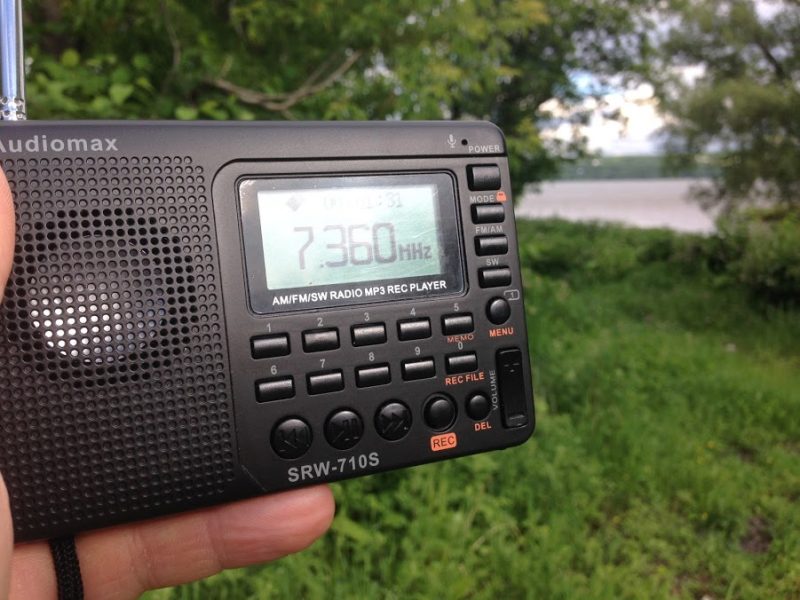
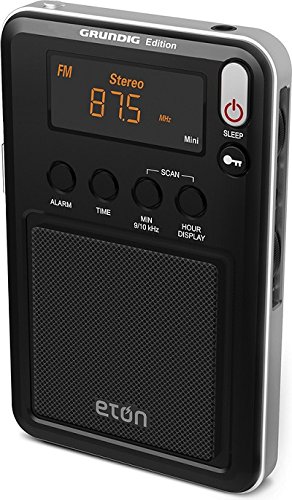
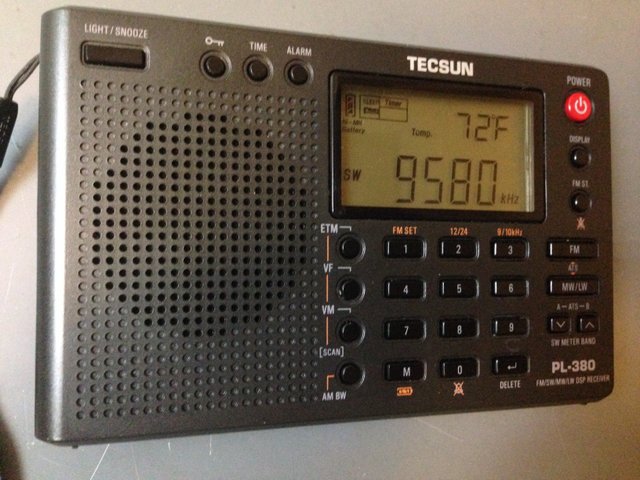

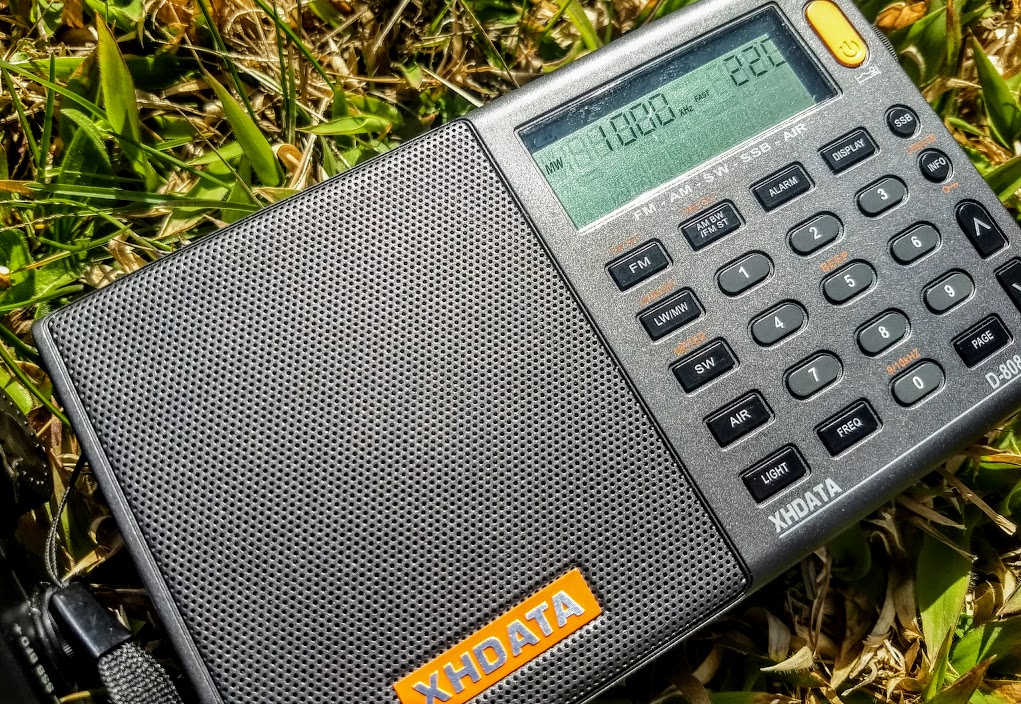
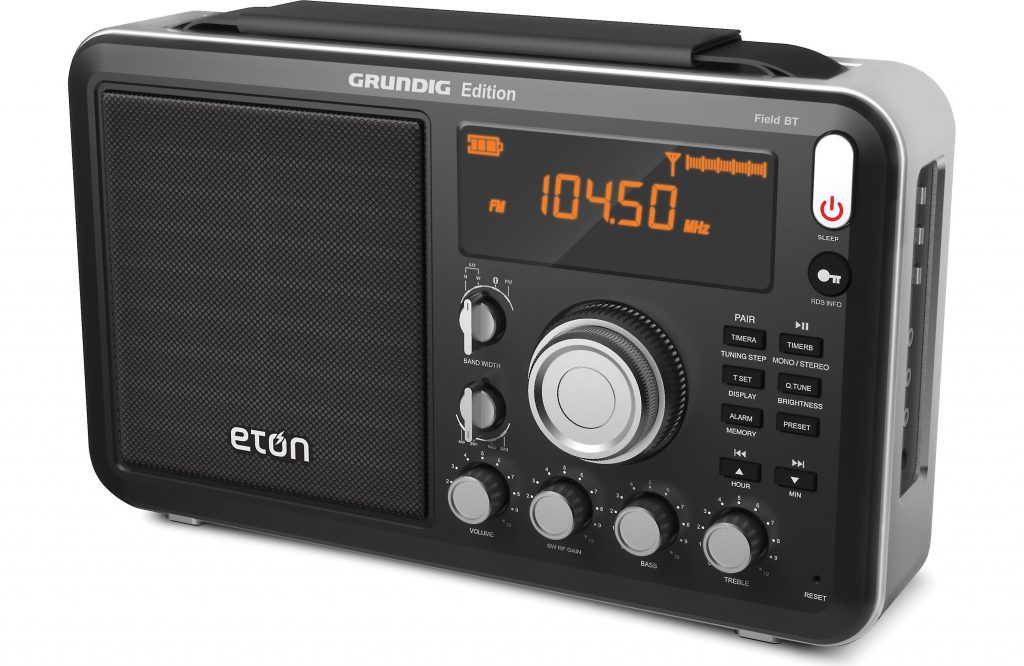
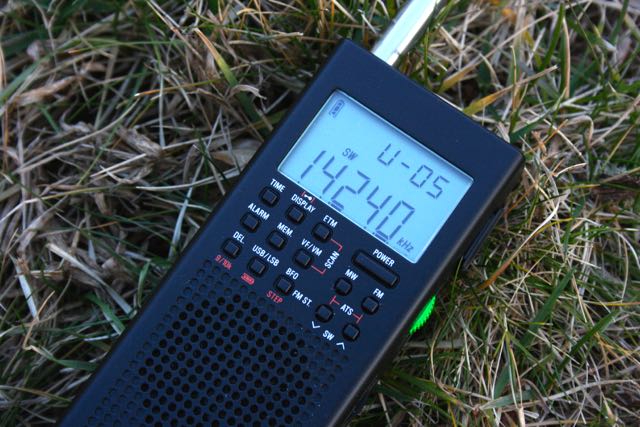
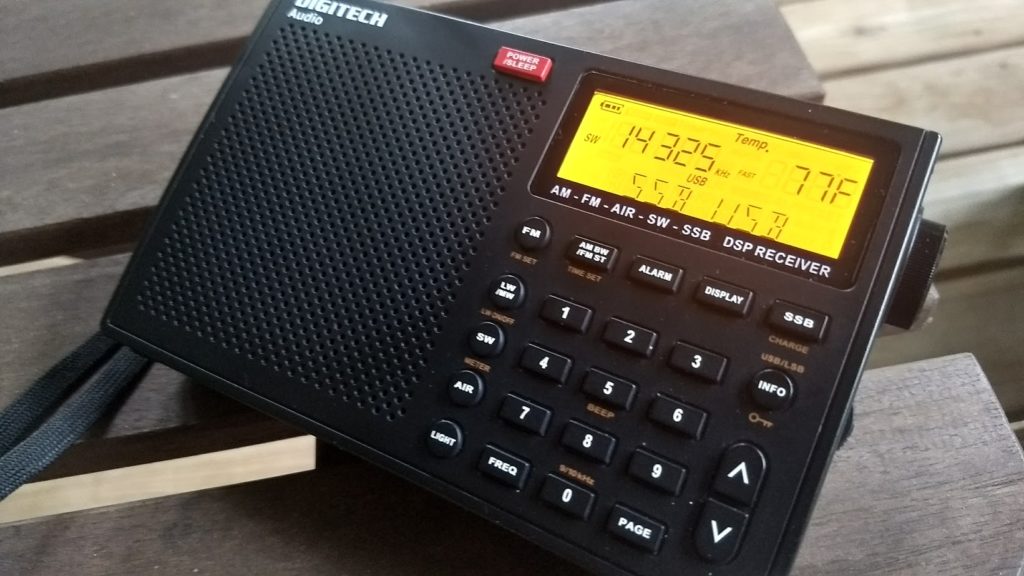

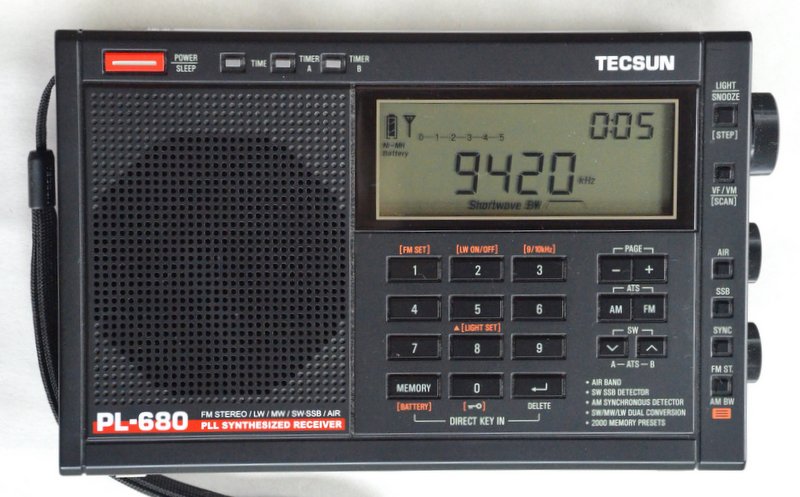
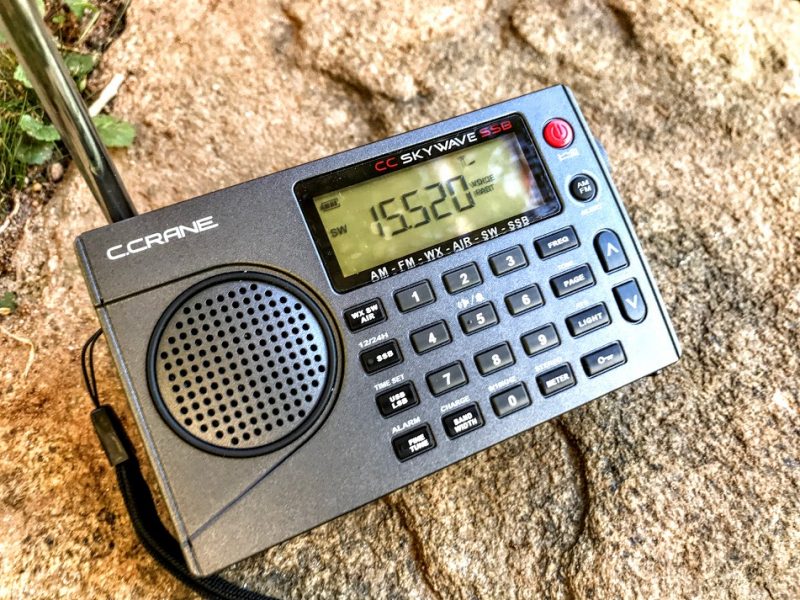

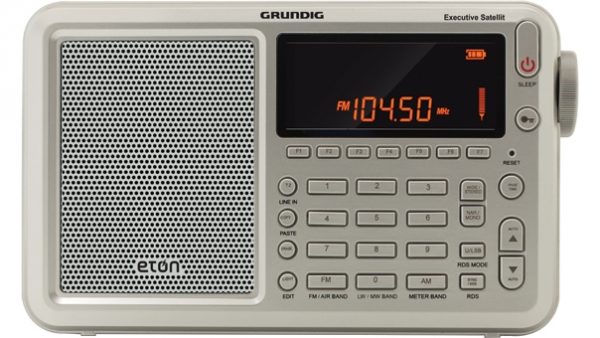
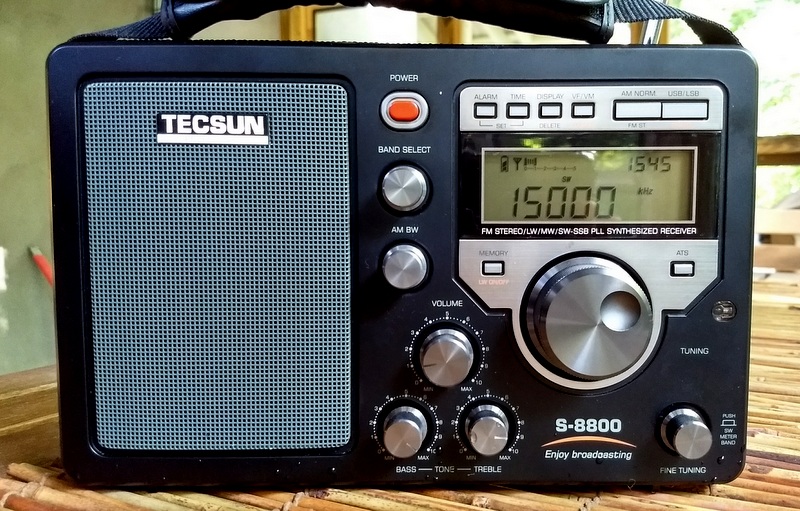
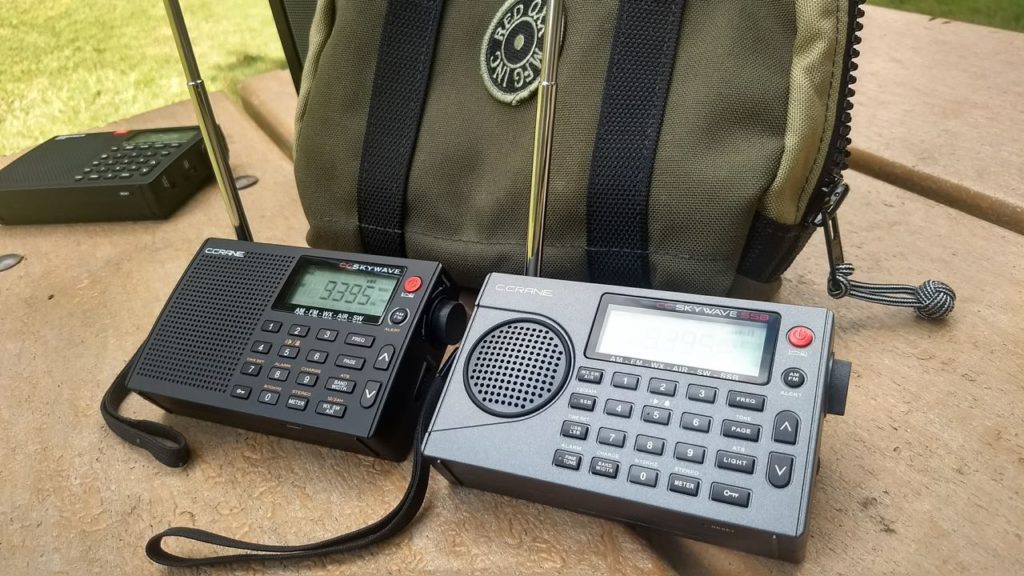

Would there be any changes you would recommend or omit from this list heading into 2024?
There are new challengers
like this:
https://radiojayallen.com/qodosen-sr-286-am-fm-sw-high-performance-portable/
and some of the other TEF6686 based radios:
https://www.aliexpress.com/w/wholesale-TEF6686.html
I’m looking for the travel radio. Since we want a beach radio, it should be simple to carry, in a convenient size, and take up little room. Bulky equipment is not recommended for the beach.
Too bad the swap and trade and “garage sale” platforms are not sponsors. Then we could get reviews of some really good radios!
So true!
I recently bought the Tecsun PL660 in part due to reviews and information on SWLing.com. Now looking for a similarly priced SW portable with better FM audio. Hoping for suggestions from Thomas or other contributors? Thanks in advance.
Greetings enjoyed your list, however it seems to me (Playing with radios since JFK killed) in an emergency it seems like we over look the power situation. I have a big Ford generator and even though pure sine wave I might in an emergency have to got to a little backup one. I would be hesitant to put my FTDX3000 or IC-r71A on it as it is a 2cycle made in China, I have had folks bring me radios to look at to repair seen several burnt out due to poor power. I think (only an opinion ) a vintage set might be included mine are a Hammarlund 180 and a Wells Gardner from a B-24 I keep going. They do not care what kind of crappy power they get. Also two of the Sony CRF portables (at their weight calling portable is a joke) have ability to get sidebands. really enjoyed your site Hope I never really need these oldies but nice in case to have. Yours truly Robert
Would you still say the S-8800 gives the best shortwave reception compared to all other radios in the under $300 range? Is it better than the S-2000 on shortwave?
Also, it appears Tecsun discontinued the S-8800, is this true and do you know why? Thank you.
Will the radios you have spoken of be suitable for Western Australia
Yes indeed. But I wouldn’t, personally, go lower in price than the Tecsun PL-380 or PL-310ET. Not if it would be my only shortwave radio.
Cheers,
Thomas
I have an Eton (“Grundig Edition”) Satellit that I bought in 2018 when I returned to shortwave listening, and I’ll vouch for its performance.
I have a bit of money to spend on another portable now, as long as I keep it around $100US or less, and I’m wondering which of these in the article (or even models not mentioned above) is best for mediumwave DXing. I already have a Tecsun AN-100 loop.
I would consider the Tecsun PL-310ET (or PL-380) or the original CC Skywave. Also the CCrane EP Pro is great on MW as long as you’re okay with an analog dial with DSP inside.
I’ve seen good reviews on the Tecsun 660 from eham.net. Thinking about getting one. Been an swl since the late 70’s. Ham for 28 yrs.
if you want something that almost does it all, get the pl-660… if you also want noaa wx, go with the cc skywave ssb – but you’ll pay 50% more… if you want ultra-compact and ssb but no air and no noaa wx, get a pl-365…
for a compact desktop portable, you can’t beat the pl-660
of course, nothing beats the ultra-ultra-ultra do-it-all super compact Yaesu VX3R, which also transmits – but good luck finding one
The pl 660 & 680 are the best sw radio’s in my house !! I also recommend the pl 360 or the county Comm gp-5 ssb
Great short reviews. Radio is very interesting and you’re making it more so. However as you mention we all have different intentions for radio and mine is just for listening to music with high fidelity. At present, March 2019, it is difficult to look for high quality FM tuners. Vintage ones are available and they still prove their worth. Antennas are a whole new chaotic world to endeavor on the other hand. Kudos on your blog and god speed!
Excellent article and I agree with 99% of Thomas’s choices. Thomas does very detailed reviews and provides detailed information about radios. See see my video on this article and Thomas’s website.
https://youtu.be/eI0KMnluNfA
Tom Stiles
Thomas, I think you have the Tecsun PL-880 marked as the Pl-800.
Tom Stiles
Please note that the XHDATA D-808 does not run on AA cells but uses one 18650 lithium battery.
Unfortunately, I had bad experience: standby time is only about 1 week. Therfore, I exchanged the radio but the new one showed similar behaviour…
Regards
Axel B.
Interested to hear about your experience.
Mine was fine for months before suddenly exhausting its batteries in just hours. When I turned it off, you could still hear a faint hissing from the speaker.
Mark
I even tried different types of 18650 batteries (different manufacturers, varying capacity) as I thought the device ships with low quality batteries – it did not help. This is quite a little disappointment: every time I want to play with the radio at the weekends, the battery is down…
It is even more surprising as it is my second receiver (exchange device) and as many people report about excellent battery life… ?
Regards
Axel B.
Another excellent report. This is Tom Stiles and I have the YouTube channel hamrad88 – Tom’s Radio Room Show and would like to do a quick review of this article and your website with your permission. I have done other shows about your excellent website and would like to use this particular post to show people the extensive amount of information you provide once again.
Please let me know if I can use this article in one of my shows. I plan to just do a quick overview and then send people to this article to do a full review on their own.
Tom
Hiya, Tom! No introductions needed, friend! Absolutely, it would be an honor…feel free to use the article as you see fit. Also, post a link to the video in the comments so readers here can view it! -Thomas
Video released and link to this article included in the Description.
Tom Stiles
I was just in the middle of a search and comparison of portable radios capable of SSB, RDS and AirBand, so this article was very helpful, thank you! (And I just ordered the Xhdata, unfortunately the Eton GE Satellit is hard to find (in the EU) and more expensive.)
Remark: maybe the lack of RDS can be added as a “Cons” to the Tecsun PL 660/680.
True–when the PL-660 was introduced so few portables had built-in RDS…the Grundig G3 is the only one that comes to mind. Many do these days, though, as they’re based on DSP. I think you’ll enjoy the D-808!
I don’t even care if a rig has rds !! Hardly a deterrent!! Especially when considering a radio as sweet as the pl 660
The Digitech AR-1780 battery drain issue is fake. There is one troll using multiple names who is stating this.
Nobody who has reviewed this radio on YouTube has found this issue.
Enough readers have confirmed my own experience with this, that I amended this part of the review. Thanks!
I purchased the Tecsun PL-365 in a misguided attempt to rig up something I could play over my car stereo, as my Sony shortwave car stereo died after years of reliable service. I was hoping for something I could fit in the cup holder and play through the stereo using an FM transmitter. I haven’t even attempted to play anything over the car stereo as of yet because the Tecsun is absolutely deaf on AM and shortwave; I can receive strong FM signals and a local AM station if I am within 2 miles of the transmitting antenna. It will not receive signals with a 51-foot wire antenna that my Tecsun PL-660 will receive with the telescoping rod antenna. Audio quality of the speaker on the PL-365 is easily the worst of any radio I have ever heard in my life. $46 for a lesson well learned.
My mistake, the model I bought was the PL-360, the model without SSB capability. Everything else in the review is accurate.
I echo your comments regarding the Digitech AR-1780. I have one CON: The antenna jack is liable to go open circuit (the internal antenna (whip) does not switch back after the jack plug is withdrawn). This has happened on the two sets that I have had. This aside, shorting the jack socket out by soldering the switch terminals together fixes this problem. Performance wise on FM is remarkable for a set in this price bracket.
Thomas,
under 200+ Range, Tecsun S-8800, Cons, you mentioned: …can’t charge and listen at the same time as is not designed for AC operation ,…
Are you sure about that claim?
As mentioned by Jay Allen in his C. Crane Skywave SSB Radio Review, dated, 11/27/17, under the subheading: Special Note About the Optional Skywave Adapter:
However, if you want a totally quiet USB AC Adapter for the Tecsun S-8800, which needs more than 300 mA current, the C. Crane Witness Plus AC Adapter will charge, or directly power, such larger radios as the Tecsun S-8800 or the PL-880 – without adding any noise to their AM/SW reception – and it will charge them faster than most small USB chargers. It is only available as part of an accessory pack for the CC Witness Plus Radio ($39.99 at Amazon); and, even if you don’t need the other parts of it, the adapter is the only noise-free 900 mA USB charger that you can use with these two radios. A one-of-a-kind product, that is easily worth the price.
I have the C. Crane Witness Plus AC Adapter, and have used it to successfully power (and charge) my Tecsun Pl-880 while listening to AM/SW – without adding any noise to its reception.
As for the Tecsun S-8800, I have no direct experience, but wonder if the results wouldn’t be the same? I would be interested if you, or your readers, would be able to comment on this observation.
Thanks once again for such an excellent comparative review.
Cheers and 73
Hi, Roger,
Good point…
I should have probably been more clear in that explanation. At least with the two Tecsun S-8800s I’ve tested, if the batteries are depleted, you cannot operate the radio from any adapter. True, the Tecsun adapters are noisy and the C. Crane adapter is much, much better and has enough amp juice to charge almost any radio or consumer electronics device. The C. Crane adapter is a good one, but even it can’t power the S-8800 alone. It appears to me that the S-8800 is designed to be powered by the two charged lithium rechargeable cells. If those are dead, you have to wait for the charge to reach capacity before you can turn the radio on.
It’s a bit odd, but frankly since I really only use my radios from battery power it’s no inconvenience to me at all.
Cheers,
Thomas
Hello, Thomas,
Thank you for your reply, and for the clarification.
If I’m understanding you correctly, you do not want to deplete the two Li-ion batteries (18650), while using the Tecsun S-8800; and, then, expect to operate the radio (in AM or SW mode) from any adapter – including the better than average C. Crane Witness Plus AC Adapter.
However, if you do not deplete those batteries, could you operate the radio, using the C. Crane adapter while in FM mode – and still bring the those batts up to a full charge – as mentioned by 13dka in his Tecsun S-8800 Review, dated 8/29/2018, under the subheading: Random stuff:
“After an initial discharge and recharge cycle, the 2 X 2000 mAh Li-ion (18650) batteries gave me a continuous run time of 21 hrs. When you connect the charger and then turn on the radio, it stops charging unless – and this seems odd – you are in FM mode. A full charge while listening to FM radio took 4:41.”
Thanks and Cheers,
Roger
Hi, Robert,
Yes. You stated it perfectly on both points! I should have been more clear initially.
It’s an odd behavior for sure, but worth the quirk for such a great radio!
Best,
Thomas
Those who care about LW broadcast band should note that all the cheaper radios on this list have very poor LW sensitivity below 300-400 kHz and most or perhaps all other radios having silabs dsp front end.
It seems to me that switching between tuned MW and LW antennas would require including semiconductor switch between the tuned antenna coil and the tuning capacitor (which is inside the dsp chip). This would damp the tuning circuit and sounds like a bad idea. Therefore, it seems to me that an ingenious idea would be needed to circumvent this, but manufacturers have simply chosen not to include a LW antenna in their receivers.
LW is definitely an afterthought on most portables but a converter works very well
on mine using a tuned passive loop with a one turn pickup loop.
You cn go where the noise isn’t.
Otherwise consider the inductive tuned PK Loop,under the right conditions
some real DX can be had.
https://www.bing.com/videos/search?q=ng9d+youtube+longwave+loop&view=detail&mid=19754959942898A294A919754959942898A294A9&FORM=VIRE
If you prefer to buy rather than build,the PK Loop is around $100 usd
delivered* but be sure to get the 155-500 khz model.
*depending on the usd-aus exchange rate
And:
https://swling.com/blog/2016/12/nows-the-time-to-grab-longwave-dx/#comments
As always, Thomas, pure radio porn for those of us who truly enjoy parking ourselves somewhere and seeing “what comes in.” I hope to be able to enjoy this hobby for many more years – the quality of receivers is a good sign.
Two notes – the Digitech AR 1780’s reputation on batteries, while noted in a few locations, all seem to be from the same individual.
The other, while an interesting commentary on lithium vs AA cells, I’m still on the side of the more available, over-the-counter AA as a reliable power source.
There is a case for those, but I tend to prefer the availability of convenient recharging capability. With a radio that uses USB charging, I can power it with many different sources. With a specific battery type, I must find someone selling said type. The USB power also insulates me from a need to search the box of old batteries that I either forgot to recharge or were simply not rechargeable in the first place but I was lazy and put them back in the box. You will find that USB cables, batteries designed for phone use, and wall chargers are also widely available nearly everywhere.
Same individual or not makes little difference. It’s a matter of fact that radios with lithium batteries have the charger included in the radio and that you do not have to extract them or travel with separate charger. Just plug the radio to any usb adapter at home or in the car.
It is also a matter of fact that these radios come with the lithium battery included with the radio (and with its price) so if you want to keep a spare you are plenty of time to find the best bargain online as you can afford to receive it in the mail after one month. However these batteries, expecially the 18650 are now very common in any dep’t store and they are widely used in electronic cigarettes gear and flashlights.
The price of a 18650 lithium battey can be as low as the price of a single AA battery while it keeps the charge of two to four of them.
This post was excellent. I enjoy that you mention the wide variety of receivers that the unfamiliar could use to enter the hobby, a thing that many other SWLing advocates ignore. I, too, am primarily a portable user, as my typical method for listening includes going to other places with my sets (I’m going to visit a friend in America later this month, and I would not want to try bringing an SDR with associated antenna through that customs nightmare). I will be bringing a portable or two because I know I will have some time to tune in. Well done.
Xhdata D-808 and CC Skywave SSB are about the same radio except the NOAA Wx present only on the Skywave.
Digitech AR-1780 has a ridiculous price above $100; it used to be around $45. It is about the same radio as the two above but lower value because it uses obsolete 2xAA power supply instead of lithium batteries supplied with the radio.
Compared to very cheap radios like the V-115 they do not have just additional SSB mode but also a front end with band filters and a bigger ferrite antenna for MW.
My suggestion is to consider only radios with lithium batteries and USB recharge; don’t become slave of the old AA betteries
I, too, agree that the older AA batteries should just be voluntarily retired. In addition to adequate safety, Lithium cells are plentiful and can accommodate various sizes and voltages. Newer battery chemistry will even increase this disparity and safety.
You can get the AR1780 for about the same price as the XHDATA D-808 – shipped – if you order from the Jaycar web site and avoid the Ebay resellers who are inflating the shipping prices. The same thing has happened to the price of the D-808; I got mine for $49 when they first came out, and now they’re something like $125 shipped. And while the D-808 comes with some accessories – it has a poorer ergonomic design, with buttons that sit so flat against the case they’re hard to press (this is of course my opinion only but I own both and can tell you the AR1780 is easier for me to operate on this basis alone).